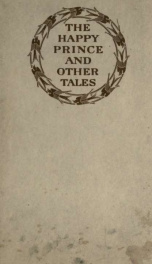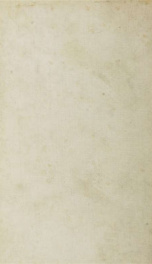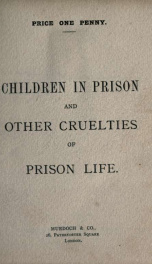Woolf, Virginia

Virginia Woolf (1882-1941) was born in London, as the daughter of Julia Jackson Duckworth, a member of the Duckworth publishing family, and Sir Leslie Stephen, a literary critic, a friend of Meredith, Henry James, Tennyson, Matthew Arnold, and George Eliot, and the founder of the Dictionary of National Biography. Leslie Stephen's first wife had been the daughter of the novelist William Makepeace Thackeray. His daughter Laura from the first marriage was institutionalized because of mental retardation. In a memoir dated 1907 she wrote of her parents, "Beautiful often, even to our eyes, were their gestures, their glances of pure and unutterable delight in each other."
Woolf, who was educated at home by her father, grew up at the family home at Hyde Park Gate. In middle age she described this period in a letter to Vita Sackville-West: "Think how I was brought up! No school; mooning about alone among my father's books; never any chance to pick up all that goes on in schools—throwing balls; ragging; slang; vulgarities; scenes; jealousies!" Woolf's youth was shadowed by series of emotional shocks. Gerald Duckworth, her half-brother, sexually abused her. In 'Sketch of the Past' (1939) she wrote: "I can remember the feel of his hands going under my clothes; going firmly and steadily lower and lower, I remember how I hoped that he would stop; how I stiffened and wriggled as his hand approached my private parts. But he did not stop." Julia Jackson Duckworth died when Virginia was in her early teens. Stella Duckworth, her half sister, took her mother's place, but died a scant two years later. Leslie Stephen suffered a slow death from cancer. When her brother Toby died in 1906, she had a prolonged mental breakdown. Vanessa, Virginia's sister, influenced a number of her characters; in childhood they bathed and slept together. Later in FLUSH (1933) Woolf parodies her own devotion to Vanessa.
Following the death of her father in 1904, Woolf moved with her sister and two brothers to the house in Bloomsbury. Vanessa, a painter, agreed to marry the critic of art and literature Clive Bell. Virginia's economic situation improved when she inherited £2,500 from an aunt. Their house become central to activities of the Bloomsbury group. "And part of the charm of those Thursday evenings was that they were astonishingly abstract. It was not only that Moore's book [Principia Ethica, 1903] had set us all discussing philosophy, art, religion; it was that the atmosphere - if in spite of Hawtrey I may use that word - was abstract in the extreme. The young men I have named had no 'manners' in the Hyde Park Gate sense. They criticized our arguments as severely as their own. They never seemed to notice how we were dressed or if we were nice looking or not." (from Moments of Being, ed. by Jeanne Schulkind, 1976)
From 1905 Woolf began to write for the Times Literary Supplement. In 1912 she married the political theorist Leonard (Sidney) Woolf (1880-1969), who had returned from serving as an administrator in Ceylon (now Sri Lanka). Leonard Woolf was born in London as the son of a barrister. He studied at Cambridge and in 1904 he went into civil service to Ceylon. From 1923 to 1930 he was a literary editor on the Nation. In 1917 he set up a small hand press at Hogart House, and worked as its director until his death. Among Leonard Woolf's works are novels, non-fiction, and his five volume memoirs Sowing (1960), Growing (1961), Beginning Again (1964), Downhill All the Way (1967), and The Journey Not the Arrival Matters (1969).
THE VOYAGE OUT (1915) was Virginia Woolf's first book. In 1919 appeared NIGHT AND DAY, a realistic novel about the lifes of two friends, Katherine and Mary. JACOB'S ROOM (1922) was based upon the life and death of her brother Toby.
With TO THE LIGHTHOUSE (1927) and THE WAVES (1931)Woolf established herself as one of the leading writers of modernism. On the publication of To the Lighthouse, Lytton Strachey wrote: "It is really most unfortunate that she rules out copulation - not the ghost of it visible - so that her presentation of things becomes little more... than an arabesque - an exquisite arabesque, of course." The Waves is perhaps Woolf's most difficult novel. It follows in soliloquies the lives of six persons from childhood to old age. Louis Kronenberger noted in The New York Times that Woolf was not really concerned with people, but "the poetic symbols, of life--the changing seasons, day and night, bread and wine, fire and cold, time and space, birth and death and change."
In these works Woolf developed innovative literary techniques in order to reveal women's experience and find an alternative to the male-dominated views of reality. In her essay 'Mr. Bennett and Mrs. Brown' Woolf argued that John Galsworthy, H.G. Wells and other realistic English novelist dealt in surfaces but to get underneath these surfaces one must use less restricted presentation of life, and such devices as stream of consciousness and interior monologue and abandon linear narrative. Marital disappointments and frustrations she often dealt ironically. In To the Lighthouse Woolf wrote: "So that is marriage, Lily thought, a man and a woman looking at a girl throwing a ball."
MRS. DALLOWAY (1925) formed a web of thoughts of several groups of people during the course of a single day. There is little action, but much movement in time from present to past and back again. The central figure, Clarissa Dalloway, married to Richard Dalloway, is a wealthy London hostess. She spends her day in London preparing for her evening party. She recalls her life before World War I, her friendship with the unconventional Sally Seton, and her relationship with Peter Walsh. At her party she never meets the shell-shocked veteran Septimus Smith, one of the first Englishmen to enlist in the war. Sally returns as Lady Rossetter, Peter Walsh is still enamored with Mrs. Dalloway, the prime minister arrives, and Smith commits suicide. To the Lighthouse had a tripartite structure: part 1 presented the Victorian family life, the second part covers a ten-year period, and the third part is a long account of a morning and reconciliation. The central figure, Mrs. Ramsay, was based on Woolf's mother. Also other characters in the book were drawn from Woolf's family memories.
During the inter-war period, Woolf was a central character of the literary scene both in London and at her home in Rodmell, near Lewes, Sussex. She lived in Richmond from 1915 to 1924, in Bloomsbury from 1924 to 1939, and maintained the house in Rodmell from 1919-41. The Bloomsbury group was initially based at the Gordon Square residence of Virginia and her sister Vanessa (Bell). Its other members included among others E.M. Forster, Lytton Strachey, Clive Bell, Duncan Grant, and Leonard Woolf. The consolidation of the group's beliefs in unifying aesthetic concerns occurred under the influence of the philosopher G.E. Moore (1873-1958). By the early 1930s, the group ceased to exist in its original form.
In the event of a Nazi invastion, Woolf and Leonard had made provisions to kill themselves. After the final attack of mental illness, Woolf loaded her pockets full of stones and drowned herself in the River Ouse near her Sussex home on March 28, 1941. On her note to her husband she wrote: "I have a feeling I shall go mad. I cannot go on longer in these terrible times. I hear voices and cannot concentrate on my work. I have fought against it but cannot fight any longer. I owe all my happiness to you but cannot go on and spoil your life." Woolf's suicide, like Sylvia Plath's, have much colored the interpretation of both of their work.
Virginia Woolf's concern with feminist thematics are dominant in A ROOM OF ONE'S OWN (1929). In it she made her famous statement: "A woman must have money and a room of her own if she is to write fiction."The book originated from two expanded and revised lectures the author presented at Cambridge University's Newnham and Girton Colleges in October 1928. Woolf examined the obstacles and prejudices that have hindered women writers. She separated women as objects of representation and women as authors of representation, and argued that a change in the forms of literature was necessary because most literature had been "made by men out of their own needs for their own uses." In the last chapter Woolf touched the possibility of an androgynous mind. Woolf refers to Coleridge who said that a great mind is androgynous and states that when this fusion takes place the mind is fully fertilized and uses all its faculties. "Perhaps a mind that is purely masculine cannot create, any more than a mind that is purely feminine..." THREE GUINEAS (1938) urged women to make a claim for their own history and literature.
ORLANDO (1928), a fantasy novel, traced the career of the androgynous protagonist, Orlando, from a masculine identity within the Elisabethan court to a feminine identity in 1928. Chief model for the character was writer Vita Sackville-West, with whom Woolf had a lesbian relationship. The book was illustrated with pictures of Vita Sackville-West, dressed as Orlando. According to Nigel Nicolson, the initiative to start the affair came as much on Virginia's side as on the more experienced Vita's. Their relationship coincided with a period of great creative productivity in Woolf's career. In 1994 Eileen Atkins dramatized their letters in her play Vita and Virginia, starring Atkins and Vanessa Redgrave.
As an essayist Woolf was prolific. She published some 500 essays in periodicals and collections, beginning 1905. Characteristic for Woolf's essays are dialogic nature of style - her reader is often directly addressed, in a conversational tone. A number of her writings are autobiographical. In the essay on the art of Walter Sickert, which was inspired by her visit in his retrospective show, Woolf asked how words can express colour, and answered that all great writers are great colorists: "Each of Shakespeare's plays has its dominant colour. And each writers differs of course as a colourist..." (Walter Sickert: A Conversation, 1934). Woolf rejection of an authoritative voice links her essays to the tradition of Montaigne.
do you like this author?
What readers are saying
What do you think? Write your own comment on this book!
write a commentWhat readers are saying
What do you think? Write your own comment on this author!
write a commentBook list
What readers are saying
What do you think? Write your own comment on this author!
write a commentif you like Woolf, Virginia try:
readers also enjoyed
What readers are saying
What do you think? Write your own comment on this author!
write a commentGenre
if you like Woolf, Virginia try:
readers also enjoyed
Do you want to exchange books? It’s EASY!
Get registered and find other users who want to give their favourite books to good hands!







